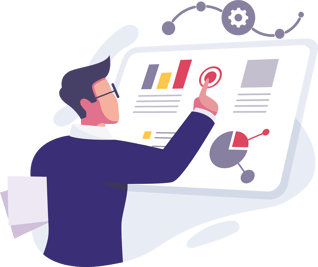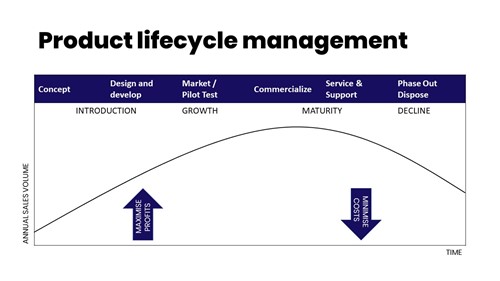Nowadays, there are many definitions related to managing the processes and information regarding producing products and services. Often it is not entirely clear what is meant with this terminology.
The most common terms related to Variantum’s focus area Offering Management are Product Lifecycle Management (PLM) and Product Data Management (PDM). What do these words mean and what is the difference between them?
Traditionally PLM means managing the whole product lifecycle: designing, engineering, manufacturing, sales, usage, recycling and disposal. Sometimes the company systems cover only the internal information about the product and processes until sales and end up forgetting the possibilities of after sales and maintenance.
On the other hand, PDM means handling product data. It is usually an internal system to manage technical product data, different versions, as well as materials related to designing and production. These materials can be technical images, component or subcontractor information.
 Product lifecycle means the entire time that the product can be used. The lifecycle already begins at the pre-design phase when the requirements and features are mapped. The design phase may consist of several cycles i.e., redesign stages. Once the product is finalized it will be manufactured to customers. Afterwards, the product may need maintenance services, or it may be upgraded with a new functionality. The last phase of the lifecycle is when product can no longer be used, and it will turn into waste or is recycled.
Product lifecycle means the entire time that the product can be used. The lifecycle already begins at the pre-design phase when the requirements and features are mapped. The design phase may consist of several cycles i.e., redesign stages. Once the product is finalized it will be manufactured to customers. Afterwards, the product may need maintenance services, or it may be upgraded with a new functionality. The last phase of the lifecycle is when product can no longer be used, and it will turn into waste or is recycled.
PLM systems have been developed to manage the product lifecycle. However, this is not always enough. Even with ordinary PLM systems the product data is not utilized in the most optimal way.
Variantum’s software VariSuite enhances customer processes by utilizing a common offering model to enrich and extend the lifecycle of the offering data in all process phases: sales, engineering, production, maintenance. In our way of thinking the traditional PLM is expanded from product management towards offering-as-a-service data management.
This means that companies can enrich their configurable offering with maintenance services, ecosystems and even update it to as a service -model. In other words, the lifecycle of the offering expands significantly, and this may also affect the pricing model.
As the product lifecycle management is evolving to data-driven service-world, the specified customer needs can be met faster than before.
